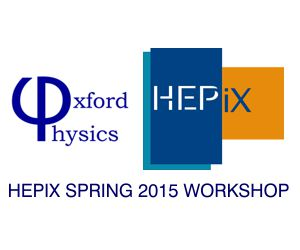Speaker
Francesco Prelz
(Università degli Studi e INFN Milano (IT))
Description
Probably the most prominent change that IPv6 introduces in the semantics of internet protocol applications is the need to *always* deal with multiple addresses (possibly both IPv4 and IPv6) associated to each network endpoint. A quick overview of how and where addresses are categorised, ordered and preferred is presented, both from the system administrator and the developer viewpoint. A few not too obvious practical consequences of RFC3484 are also shown, in an attempt to tame its subtleties.
Author
Francesco Prelz
(Università degli Studi e INFN Milano (IT))
Co-authors
Alastair Dewhurst
(STFC - Rutherford Appleton Lab. (GB))
Dr
Andrea Sciaba
(CERN)
Bruno Heinrich Hoeft
(KIT - Karlsruhe Institute of Technology (DE))
Christopher John Walker
(University of London (GB))
Costin Grigoras
(CERN)
Dave Kelsey
(STFC - Rutherford Appleton Lab. (GB))
Duncan Rand
(Imperial College Sci., Tech. & Med. (GB))
Edoardo Martelli
(CERN)
Fernando Lopez Munoz
(Universitat Autònoma de Barcelona (ES))
Jerome Bernier
(IN2P3 Computing Center)
Jiri Chudoba
(Acad. of Sciences of the Czech Rep. (CZ))
Kars OHRENBERG
(DESY)
Dr
Keith Chadwick
(Fermilab)
Marek Elias
(Acad. of Sciences of the Czech Rep. (CZ))
Raja Nandakumar
(STFC - Rutherford Appleton Lab. (GB))
Ramiro Voicu
(California Institute of Technology (US))
Simon Fayer
(Imperial College Sci., Tech. & Med. (GB))
Dr
Simone Campana
(CERN)
Thomas Finnern
(DESY)
Mr
Tiju Idiculla
(STFC - Rutherford Appleton Laboratory)
Dr
Tony Wildish
(Princeton University (US))
Ulf Tigerstedt
(CSC Oy)
